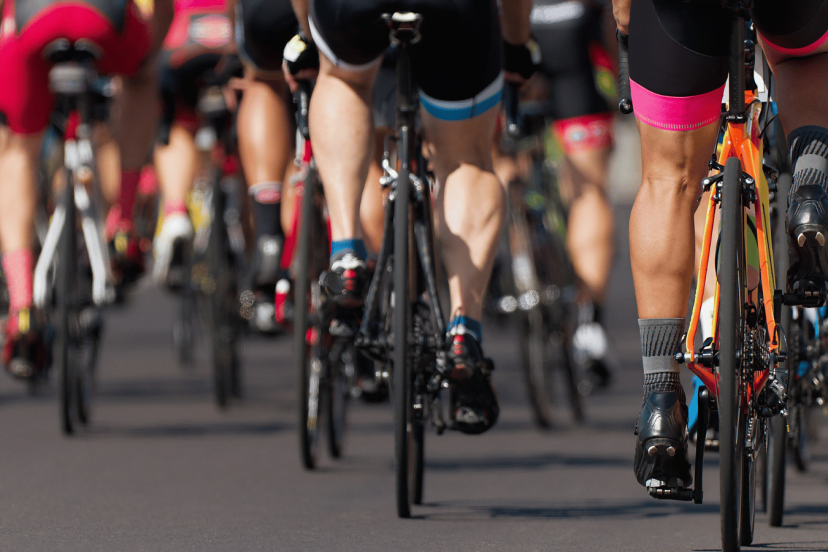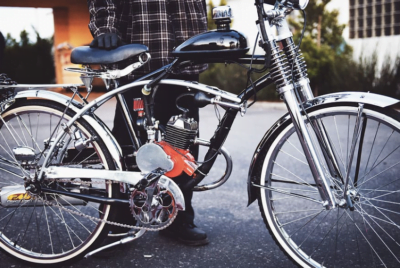Cycle Gear 101: A Beginner’s Guide to Starting Your Riding Journey
Introduction
Welcome to the world of cycling! Whether you’re a fitness enthusiast or an adventure seeker, cycling offers a plethora of benefits. But before you embark on your riding journey, it’s crucial to understand the significance of cycle gear. In this comprehensive guide, we’ll explore the essentials of cycle gear, different types of bicycles, the technology behind cycle gear, and where to find the right gear for your needs.
Understanding the Basics of Cycle Gear
-
The Helmet: Your First Line of Defense
– When it comes to cycle gear, the helmet takes center stage. It’s not just a fashion accessory but a vital safety component. Choose a helmet that meets safety standards and suits your riding style. Consider factors like ventilation, weight, and adjustability. Remember, a properly fitted helmet can be a lifesaver in the event of an accident.
-
Cycling Apparel: Comfort and Performance
– Cycling-specific apparel is designed to enhance your riding experience. Opt for moisture-wicking fabrics that keep you dry and comfortable. Padded shorts can reduce discomfort during long rides, and cycling shoes provide better power transfer and stability. Dress appropriately for the weather conditions and invest in quality apparel that will stand the test of time.
-
Essential Accessories for Every Cyclist
– Beyond the basics, certain accessories can greatly enhance your cycling journey. Gloves provide grip, protect your hands, and absorb vibrations. Eyewear shields your eyes from debris, insects, and harmful UV rays. Socks designed for cycling can provide additional comfort and moisture management. Don’t overlook these small but impactful accessories.
Navigating the World of Bicycle Types
-
A. Road Bikes: Speed and Efficiency
– Road bikes are built for speed and efficiency on paved roads. They feature lightweight frames, narrow tires, and drop handlebars. Consider factors like frame material, bike fit, and components when choosing a road bike. Properly fitted road bike gear and accessories, such as clipless pedals and aerodynamic clothing, can further enhance your performance.
-
Mountain Bikes: Conquering the Trails
– If off-road adventures and trail riding excite you, a mountain bike is your best companion. Mountain bikes are equipped with suspension systems, wider knobby tires, and flat or riser handlebars. Choose a bike with appropriate suspension, such as hardtail or full suspension, based on your terrain preferences. Additional gear like a helmet with a visor, knee and elbow pads, and hydration packs can enhance your safety and comfort on the trails.
-
Hybrid Bikes: Versatility for Everyday Riding
– For those seeking versatility, hybrid bikes are the answer. These bikes blend characteristics of road and mountain bikes, offering comfort and adaptability for various terrains. Consider factors like frame geometry, tire width, and riding position when choosing a hybrid bike. Essential gear includes lights for visibility, a rack or basket for carrying items, and fenders for wet conditions.
Decoding Cycle Gear Technology
-
Bicycle Components: From Frames to Gears
– Understanding the key components of a bicycle is essential for every rider. Frames can be made of aluminum, carbon fiber, or steel, each with its own advantages and characteristics. Gears help you navigate different terrains efficiently. Consider factors like gear ratios and the number of gears when choosing a bike.
-
Brake Systems: Ensuring Control and Safety
– Brakes are crucial for controlling your speed and ensuring safety. Common types of bike brakes include rim brakes, disc brakes, and hydraulic disc brakes. Each has its pros and cons. Regular maintenance, including brake pad inspection and adjustment, is necessary for optimal performance.
-
Wheelsets and Tires: Rolling Smoothly
Wheelsets and tires significantly impact your ride quality.
-
Exploring the different types of wheelsets and their benefits
– Considerations for wheel size, material, and construction
– Understanding the difference between clincher, tubular, and tubeless wheelsets
– How wheelsets affect ride quality, weight, and aerodynamics -
Understanding tire sizes, treads, and pressure
– The importance of choosing the right tire size for your bike and intended use
– Exploring different tire tread patterns and their suitability for different terrains
– Tips for maintaining proper tire pressure for optimal performance and comfort -
Tips for tire maintenance and puncture prevention
– Regular inspection for signs of wear and tear
– Proper tire inflation and checking for any leaks or damage
– Strategies for reducing the risk of punctures, such as using puncture-resistant tires and sealants
-
Where to Find the Right Cycle Gear
Local Bike Shops: Personalized Expertise
-
Benefits of visiting a local bike shop
– Access to knowledgeable staff who can provide expert advice
– Opportunity to test and try out different gear before making a purchase
– Support for local businesses and the cycling community -
Importance of professional fitting services
– The role of bike fitting in ensuring comfort, efficiency, and injury prevention
– How a professional bike fitting can help you find the right gear and optimize your riding experience
– Examples of fitting services, such as saddle fitting, cleat alignment, and handlebar adjustments -
Building a relationship with your local cycling community
– Participating in group rides, events, and workshops organized by local bike shops
– Tapping into the knowledge and experience of fellow cyclists
– Support and access to maintenance and repair services
Online Retailers: Convenience and Variety
-
Exploring the advantages of online cycling stores
– Convenience of browsing and purchasing gear from the comfort of your home
– Extensive range of products and brands available online
– Potential cost savings and access to online-exclusive deals -
Considerations when purchasing gear online
– Ensuring the reliability and reputation of the online retailer
– Checking customer reviews and ratings for products
– Understanding the return and exchange policies for hassle-free shopping -
Tips for finding reliable online retailers
– Seeking recommendations from fellow cyclists or online cycling communities
– Checking for secure payment options and encrypted websites
– Verifying the authenticity of the retailer through contact information and customer support channels
Conclusion
As you embark on your cycling journey, understanding the importance of cycle gear is paramount. From helmets and apparel to bicycles and components, each piece of gear plays a vital role in your safety, comfort, and performance. Whether you choose a road bike, mountain bike, or hybrid bike, make sure it suits your riding style and needs. Consider the technology behind cycle gear, such as brake systems, wheelsets, and tires, to optimize your riding experience. And don’t forget to explore local bike shops and online retailers for the best gear options that align with your preferences and budget.
Remember, cycling is not only about the gear but also about the joy of exploration, the thrill of the ride, and the sense of freedom on two wheels. So, gear up, ride safe, and enjoy the wonderful world of cycling!
FAQs
-
What is the difference between a road bike and a mountain bike?
– Road bikes are designed for speed and efficiency on paved roads, while mountain bikes are built for off-road trails with features like suspension and wider tires.
-
How do I choose the right helmet size?
– Measure your head circumference using a flexible tape measure.
– Refer to the manufacturer’s sizing chart to determine the appropriate helmet size based on your measurements.
– Try on different helmets to ensure a snug and secure fit without any uncomfortable pressure points. -
Can I use regular athletic shoes for cycling?
– While you can use regular athletic shoes for cycling, specialized cycling shoes offer several benefits such as increased power transfer, better stability, and compatibility with cycling cleats.
– Consider investing in cycling shoes if you plan to ride frequently or for longer distances to maximize your pedaling efficiency. -
What tools do I need for basic bike maintenance?
– Some essential tools for basic bike maintenance include a set of Allen wrenches, tire levers, a chain tool, a pump, and a basic wrench set.
– Additionally, it’s helpful to have lubricants, cleaning brushes, and a repair kit with spare tubes, patches, and a multi-tool for on-the-go repairs. -
How often should I replace my bike tires?
– The lifespan of bike tires varies depending on factors such as usage, terrain, and tire quality.
– Regularly inspect your tires for signs of wear, such as tread wear, cuts, or bulges.
– As a general guideline, consider replacing your tires every 2,000 to 3,000 miles or when you notice significant wear or damage that compromises safety.
Remember, investing in the right cycle gear is crucial for a safe and enjoyable riding experience. Choose gear that fits properly, enhances your comfort, and aligns with your riding style. Whether you prefer the speed of a road bike, the thrill of mountain biking, or the versatility of a hybrid bike, the right gear will enhance your performance and keep you protected. So, gear up, hit the road or the trails, and embark on an exciting cycling journey!



